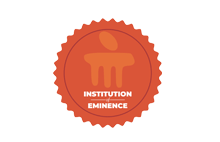INVESTIGATING THE ROLE OF SESAMOL IN PROMOTING THE HEALING OF DIABETIC WOUNDS BY ANALYZING MOLECULAR EXPRESSION PATTERNS IN HUMAN DIABETIC DERMAL FIBROBLASTS
Document Type
Article
Publication Title
Journal of Applied Pharmaceutical Research
Abstract
Background: Sesamol (3,4-methylenedioxyphenol) is one of the plant compounds tested in vivo for diabetic wound healing, normal wound healing, and dexamethasone-induced delayed wound healing. Elucidation of mechanisms underlying the wound healing effect of sesamol through modulation of various molecular and cellular pathways is the crux of this paper. Objectives: The objective of the current work was to uncover the mechanism of sesamol underlying the treatment of diabetic wounds using gene expression analysis. Methods: The cytotoxicity assay was performed using an SRB colorimetric assay, from which two doses were selected for further studies. The expression of various molecular markers was performed using RT-PCR. Results: An SRB assay was carried out to identify the safe concentration of molecules in HDDF cell lines. Two doses that showed more than 80 % viability were selected and used for gene expression analysis. It was observed that sesamol enhanced the expression of VEGF, TGFβ, AKT, JNK, ERK, and TIMP3 significantly (P≤0.001, P≤0.05, P≤0.001, P≤0.0001) when compared to control and significantly (P≤0.0001) downregulated the expression of MMP2, MMP-9 when compared to control, which promote wound healing in diabetes. The migration studies also showed a significant increase when compared to the control. Conclusion: Sesamol (SM) is a promising molecule that can accelerate wound healing in diabetes by modulating different markers involved in the process.
First Page
107
Last Page
118
DOI
10.69857/joapr.v12i3.505
Publication Date
6-30-2024
Recommended Citation
Beegum, Fathima; Anuranjana, P. V.; George, Krupa Thankam; and Divya, K. P., "INVESTIGATING THE ROLE OF SESAMOL IN PROMOTING THE HEALING OF DIABETIC WOUNDS BY ANALYZING MOLECULAR EXPRESSION PATTERNS IN HUMAN DIABETIC DERMAL FIBROBLASTS" (2024). Open Access archive. 10322.
https://impressions.manipal.edu/open-access-archive/10322


